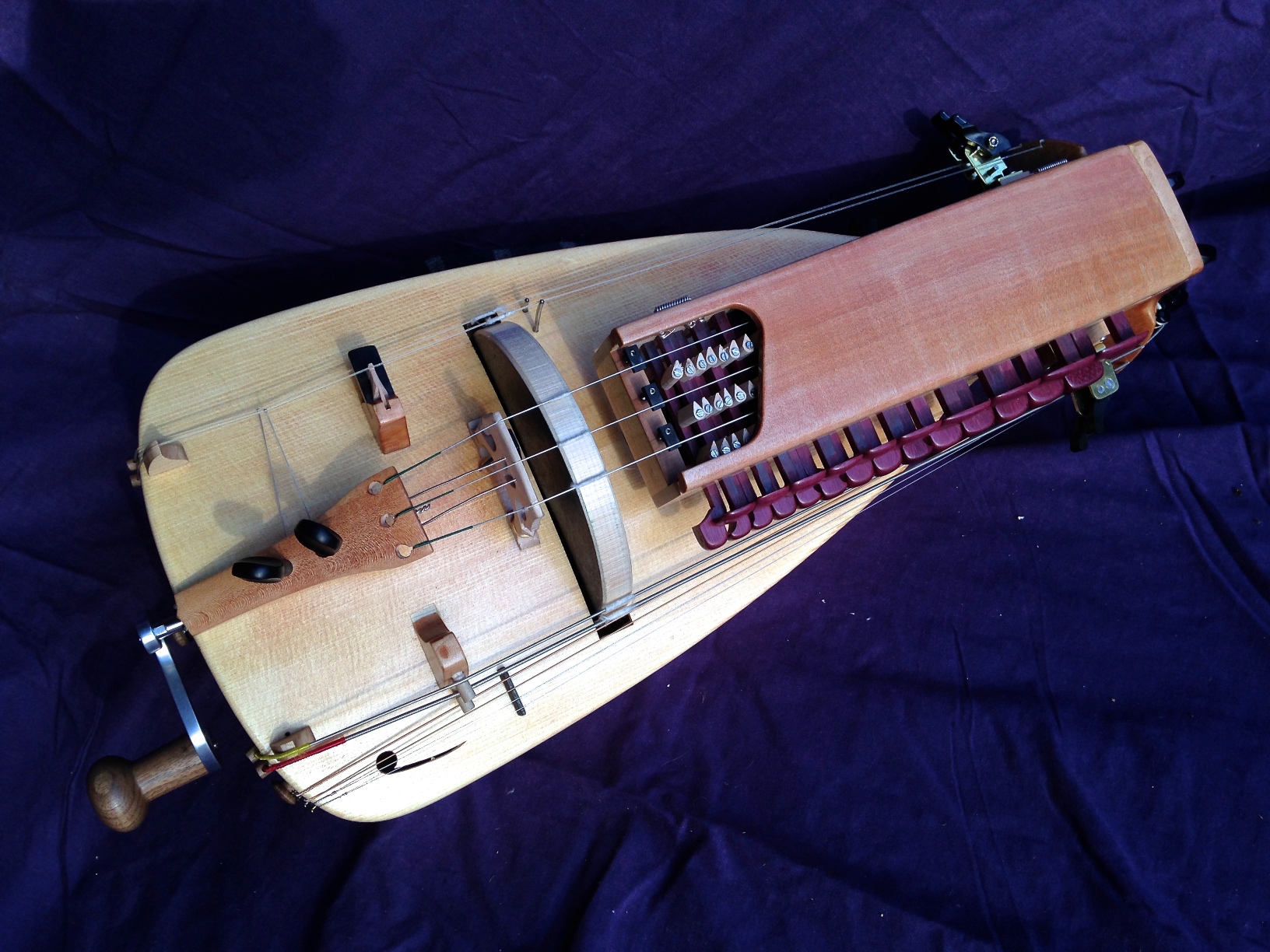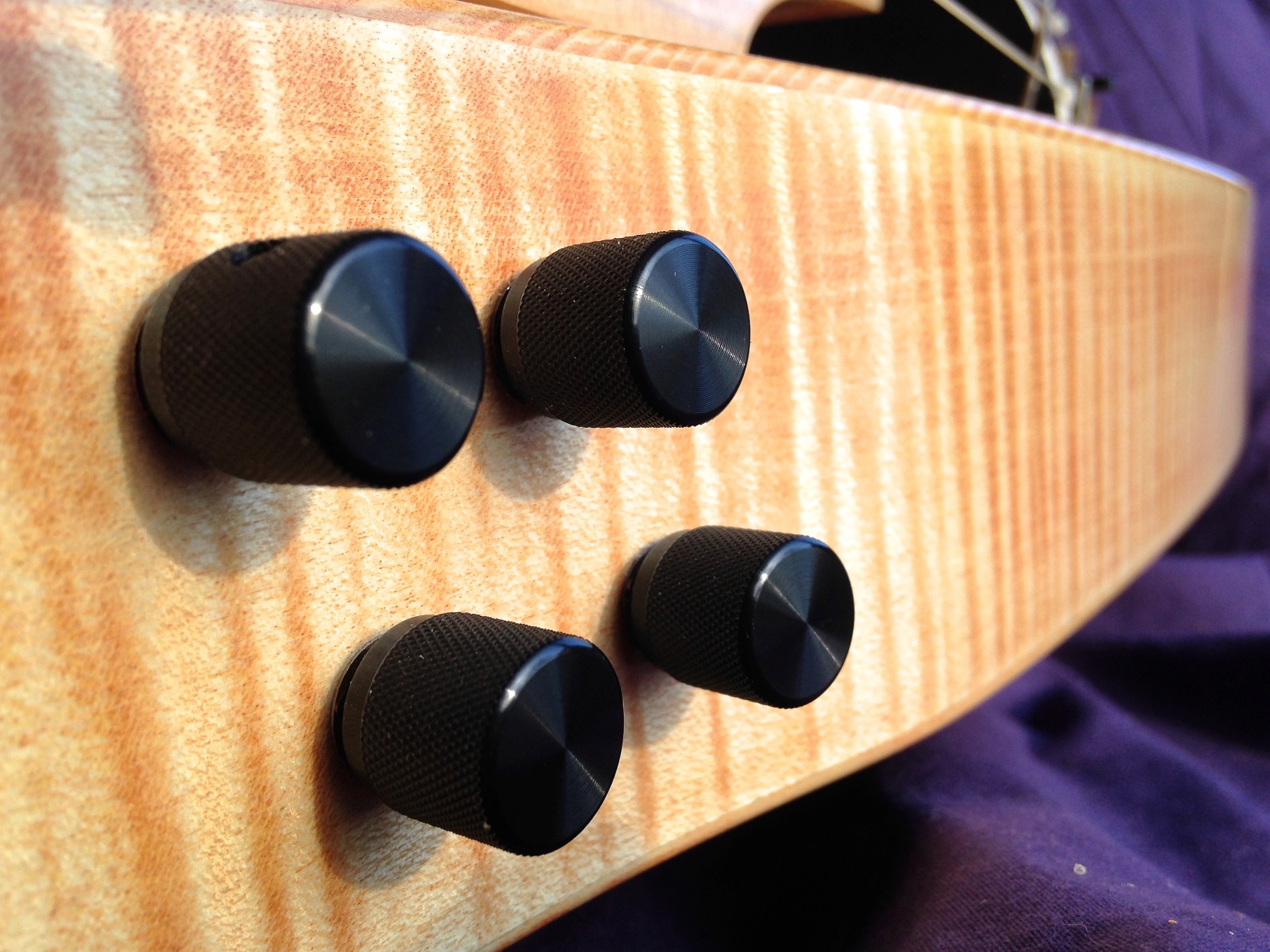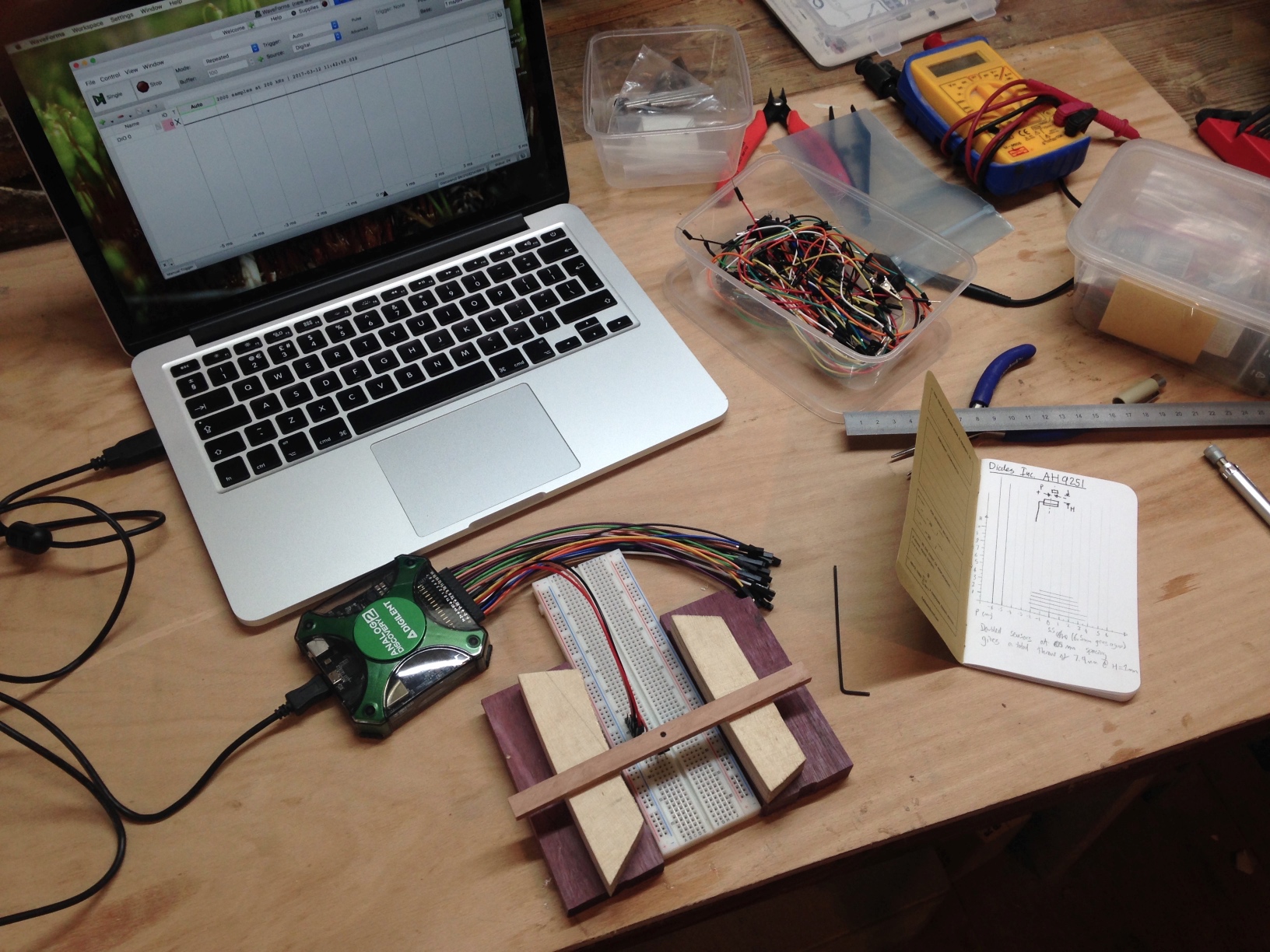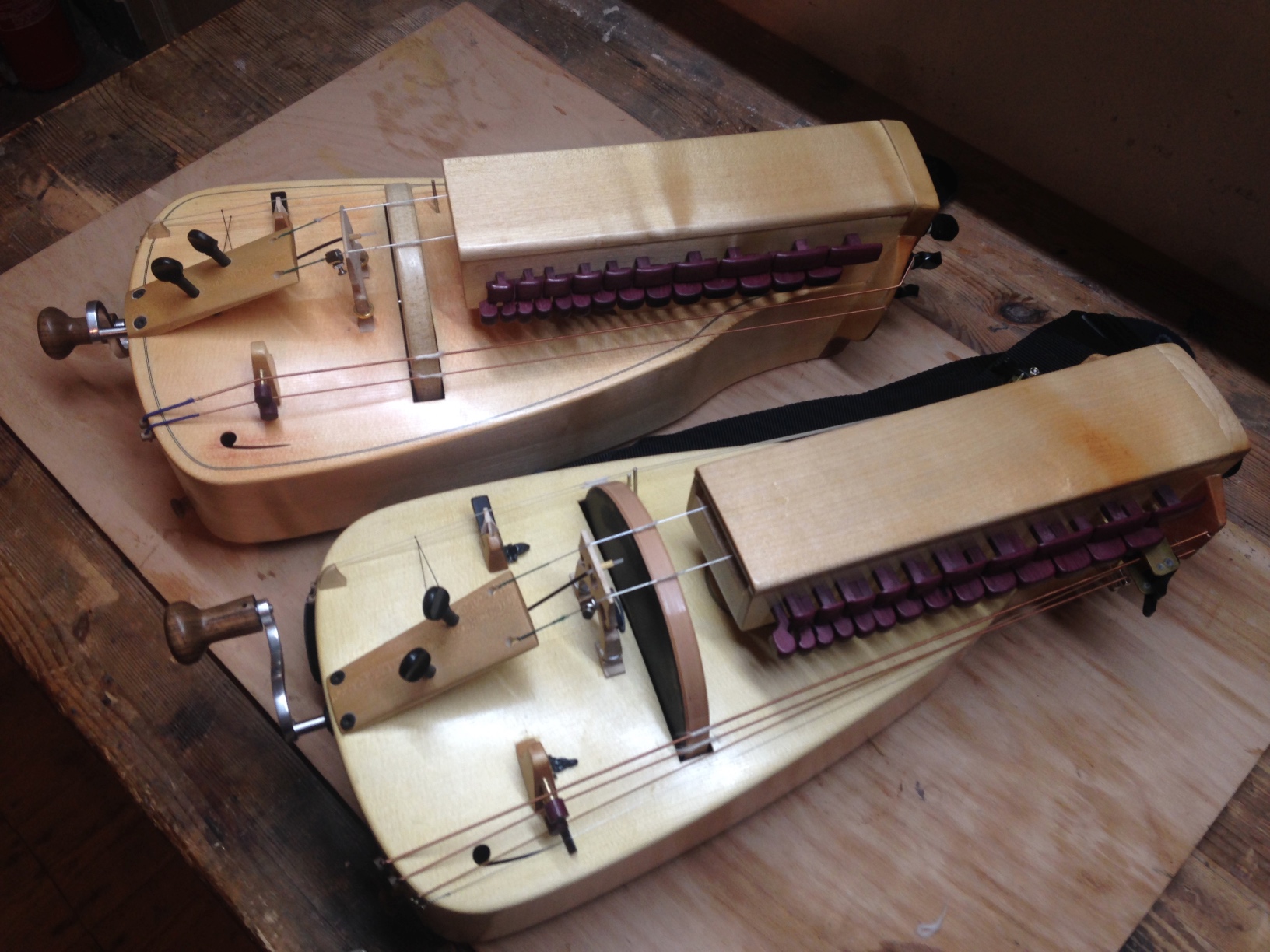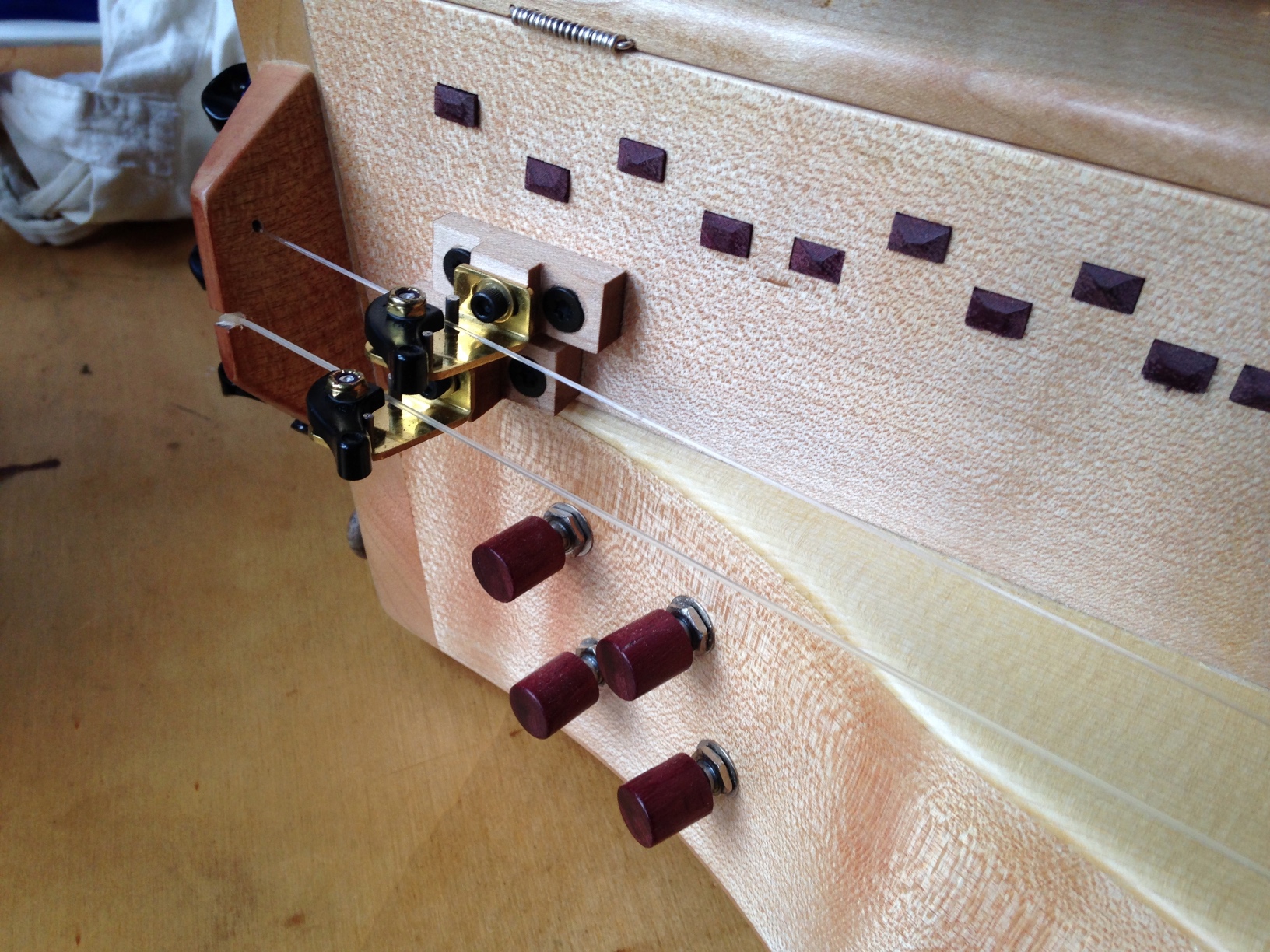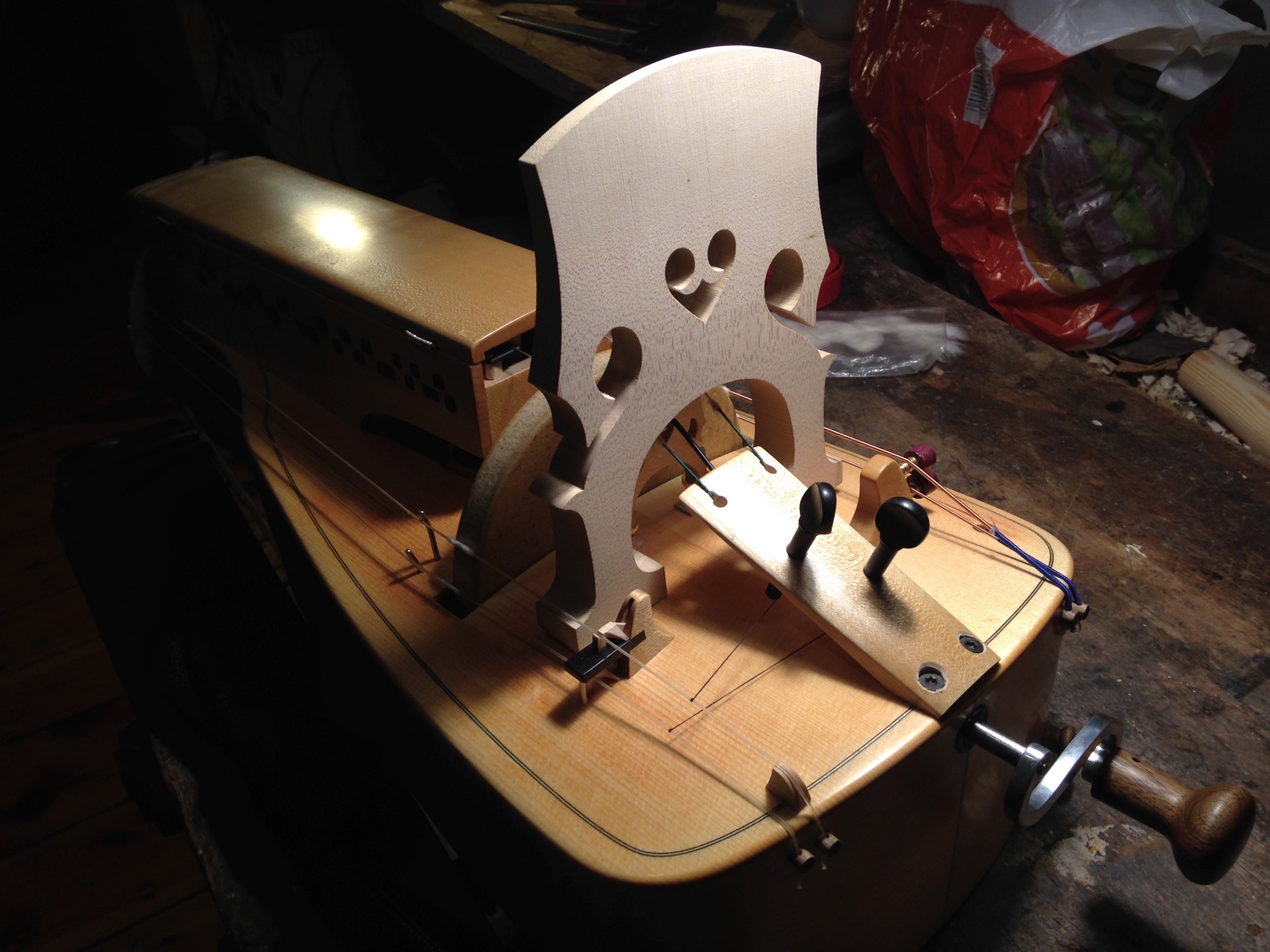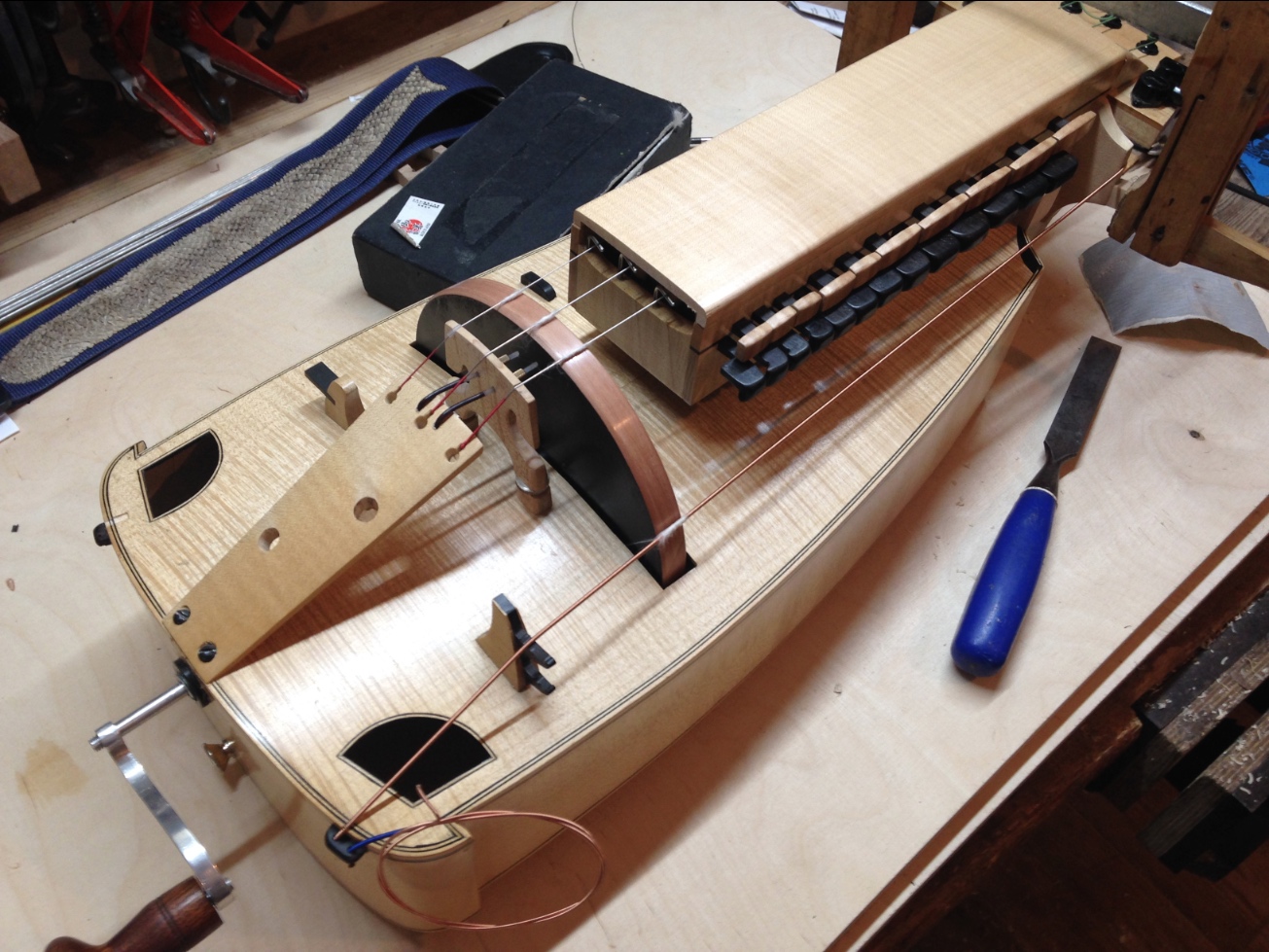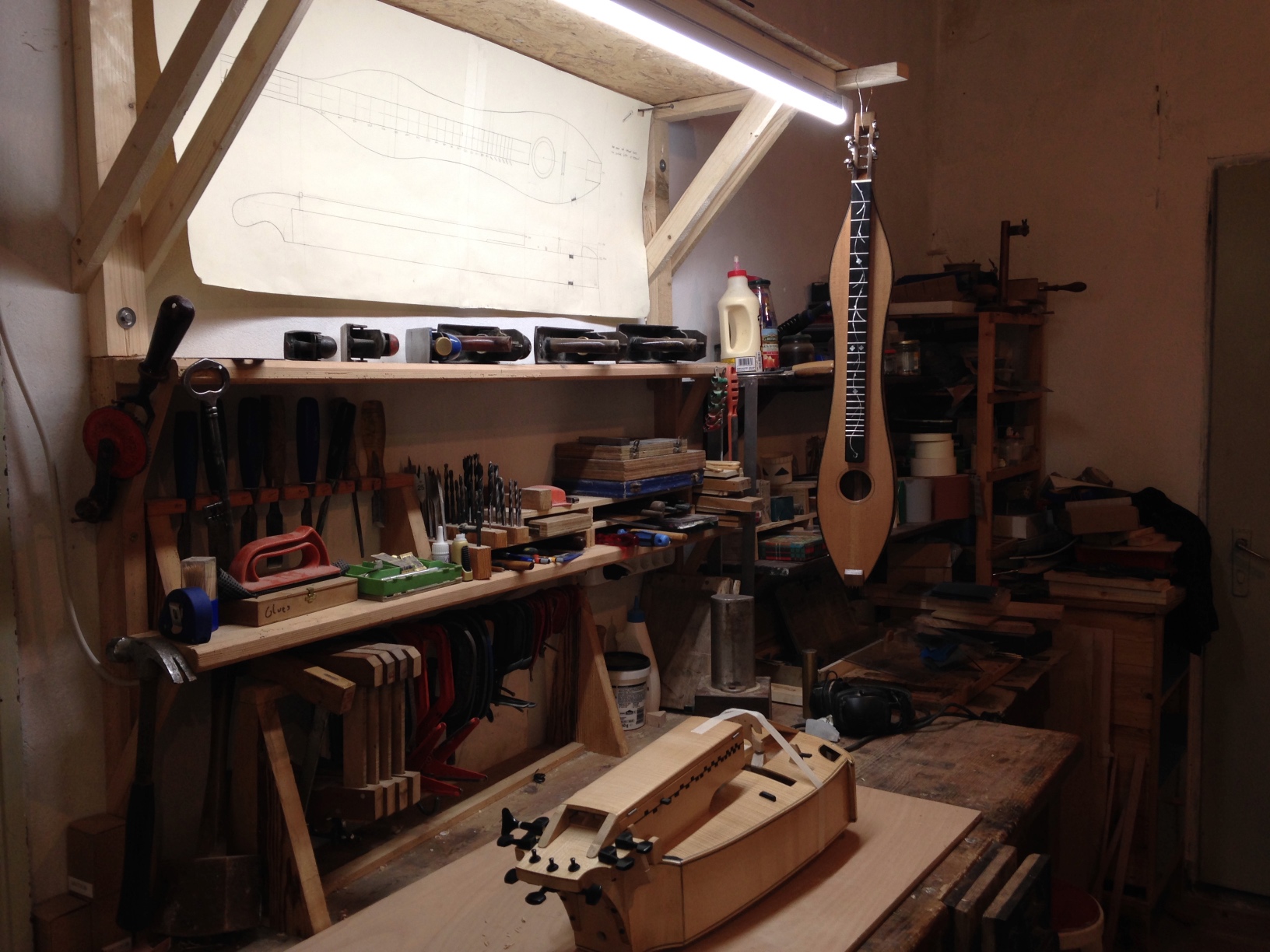Augmented Hurdy Gurdy Experiments
https://www.youtube.com/watch?v=hPGKeMdRU5I
As I can’t currently commit to building a new series of gurdies due to my living situation, I’ve been keeping myself busy developing the MIDI system for my instruments, to develop new extended, augmented playing techniques.
This video is the first demonstration of some hybrid electronic-acoustic experiments using the prototype MIDI system installed on my hurdy gurdy.
0:22 Technique: Pitch-shifting Polyphony
Gurdy MIDI and Audio → Apogee ONE → Macbook running a puredata patch
Monophonic acoustic gurdy signal is pitch-shifted down in real time to play chords and harmonies. Chords and intervals on the keyboard can also be used to pitch-shift the trompette signal (0:55) or the drones. Inspired by an idea from Sébastien Tron.
1:18 Technique: Expressive MIDI Controller
Hurdy Gurdy MIDI → DIY Hybrid Poly Synth based off Mutable Instruments Ambika
The keyboard and wheel sensors send MIDI note, expression and polyphonic aftertouch messages to a polyphonic synthesizer. In this case a split keyboard effect is used to play two sounds.
1:36 Technique: Layered Acoustic and Electronic Sound
Hurdy Gurdy Acoustic audio, Gurdy MIDI → DIY Hybrid Poly Synth based off Mutable Instruments Ambika
1:36 The acoustic string plays a melody, the bottom half of the keyboard controls a synthesizer with a long release for subtle held chords
2:08 Using trompette technique can send MIDI messages, used here to play synthesized percussion on an Ambika voice assigned to MIDI channel 10, whilst the keyboard plays chords.
2:30 Acoustic trompette and melody string sound layered over subtle polyphonic synthesized chords
Playing, Instrument and Software: Barnaby Walters https://gurdy.is https://waterpigs.co.uk
Polyphonic Pitch-shifting idea: Sébastien Tron
Filming, editing: Adriana Borger
